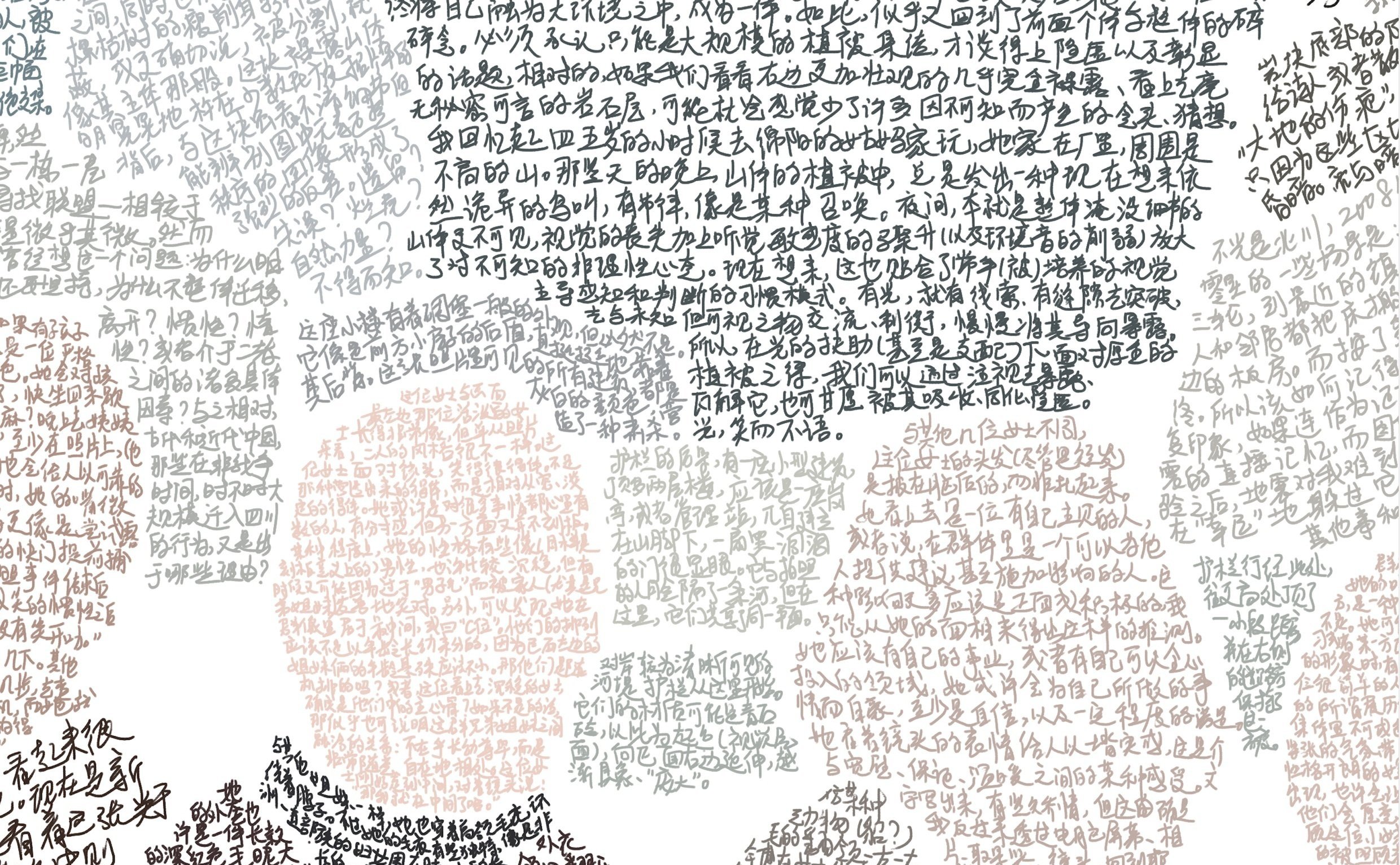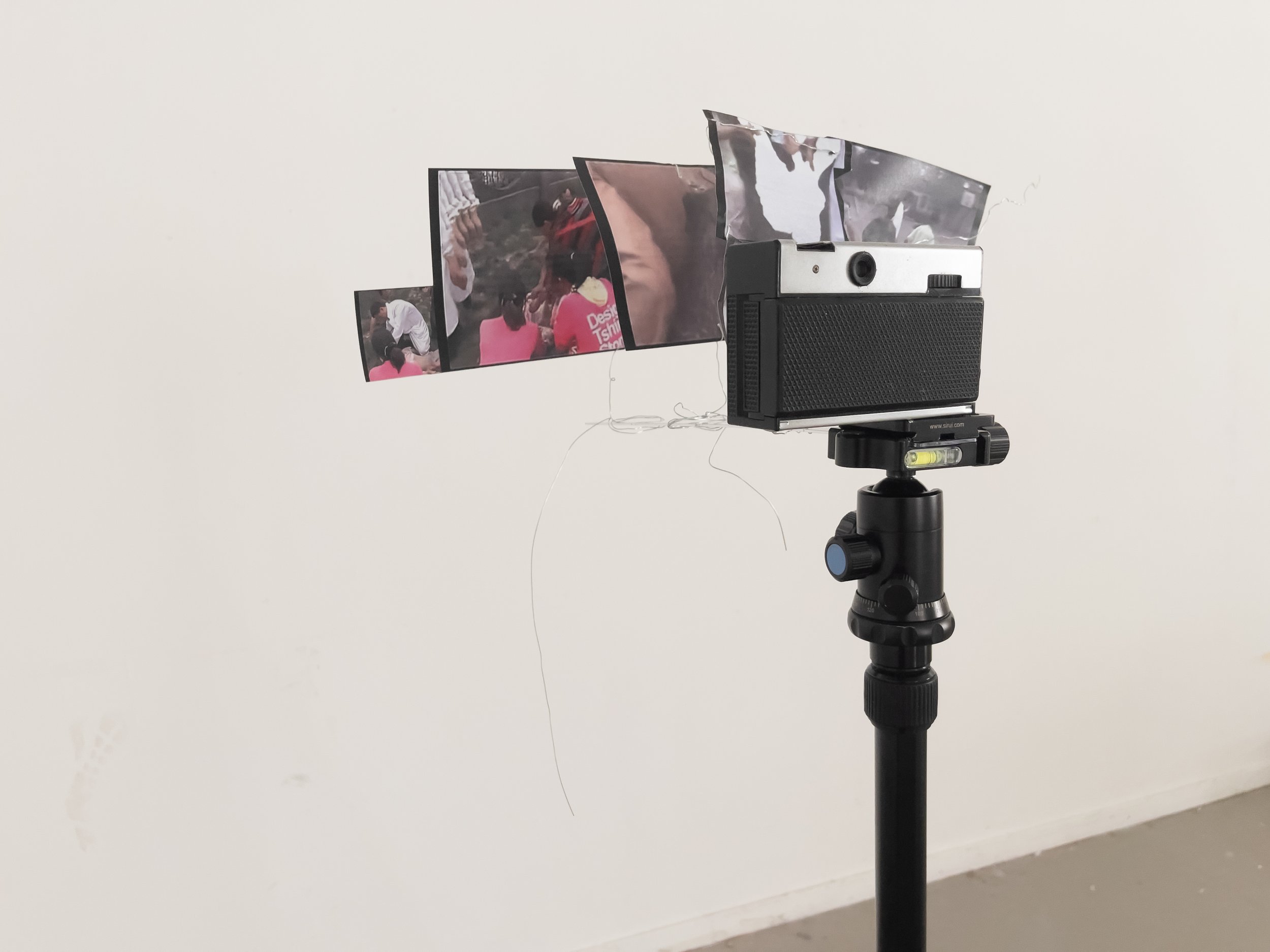Where Can I Wish You Happy?
2022-ongoing


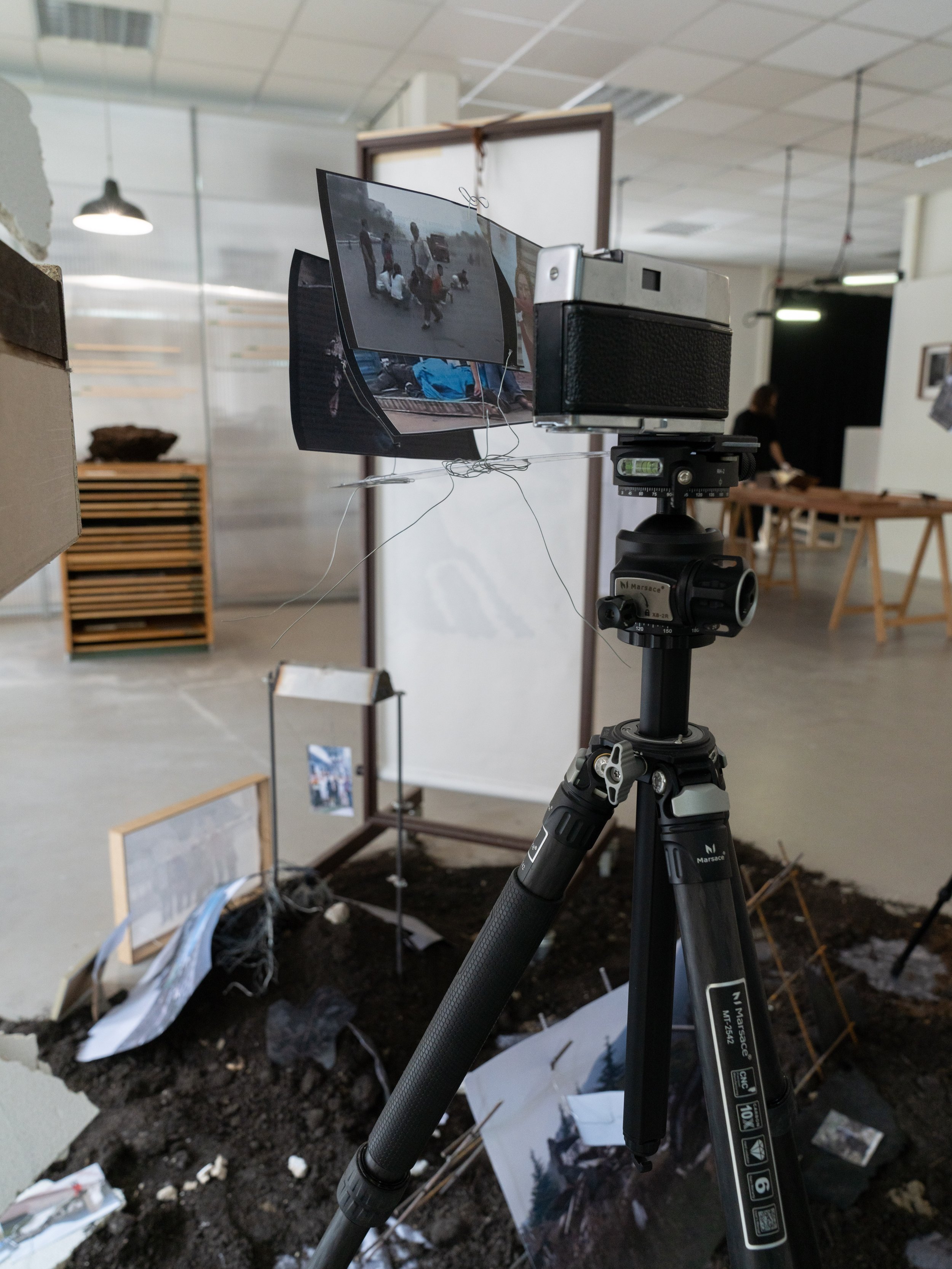
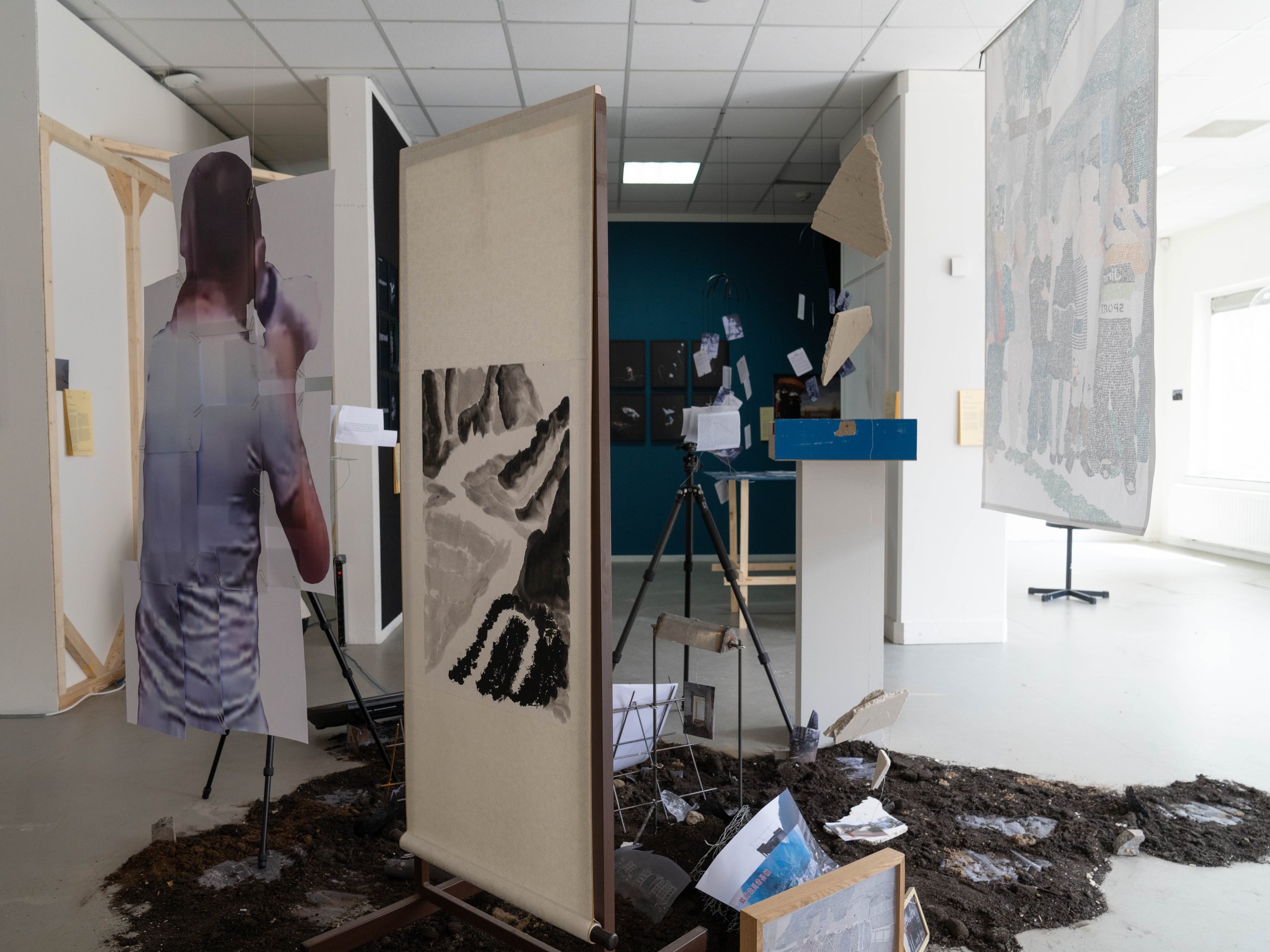
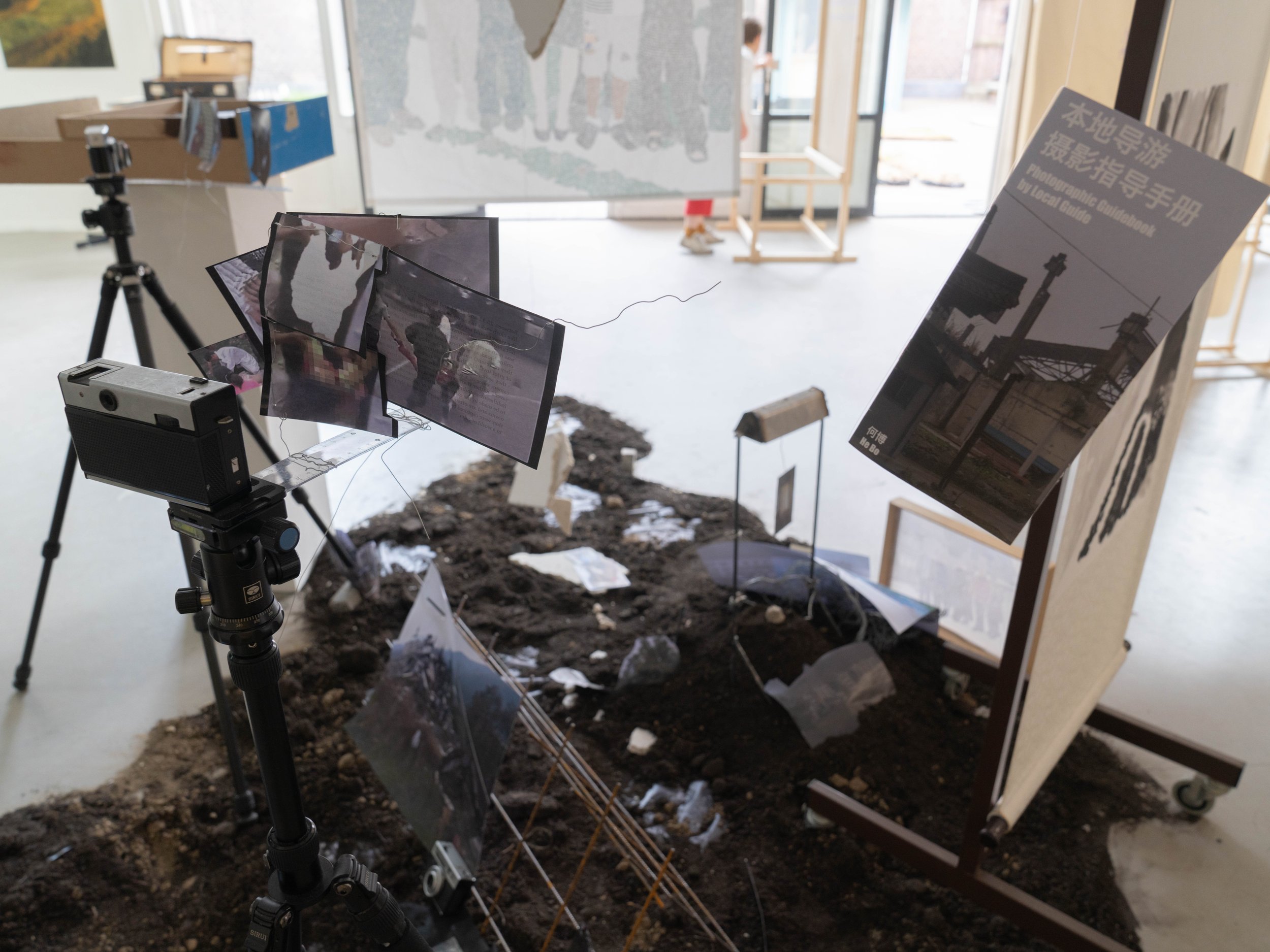
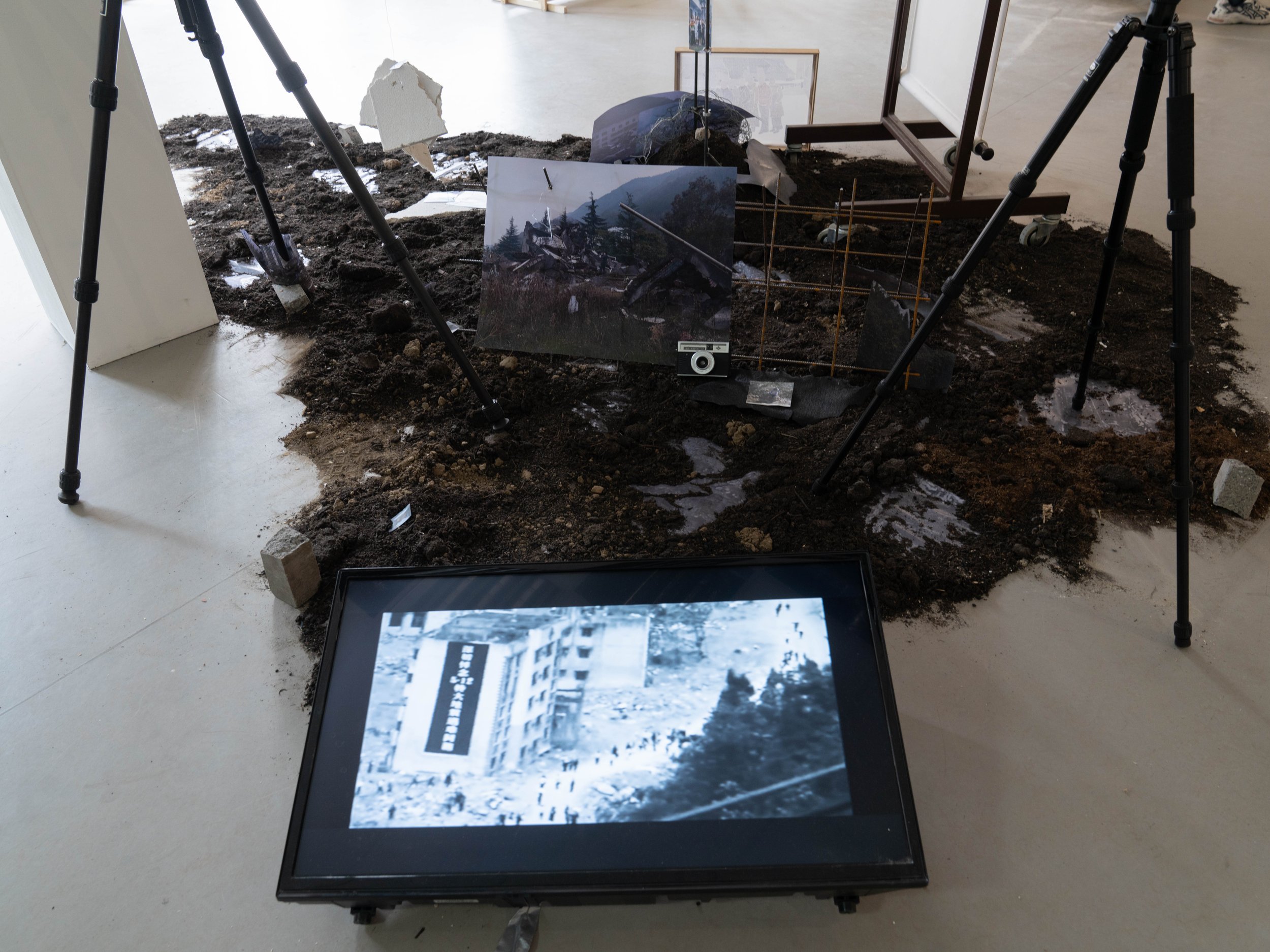
2008年5月12日14点28分,一场里氏8.0级的地震袭击了我的家乡四川,夺去了近7万人的生命。当时,我正在远离家乡的另一个城市上大学。15年后,我才终于找到一些可以说服自己的方式,将自己与之关联起来。基于我的“缺席”“距离”和“局外”状态,《Where Can I Wish You Happy?》从几个不同的方向展示了我和与我情况类似的国人将自己与地震记忆联系起来,并塑造我们的后记忆之可能性。
它们也是我同名论文一部分内容的视觉化。
On 12 May 2008, at 14:28 Beijing time, an earthquake with a magnitude of 8.0 on the Richter scale struck my home province of Sichuan, China, claiming the lives of nearly 70,000 people. At the time, I was at university in another city far from home. Based on my personal states of ‘absence’ ‘distance’ and ‘being an outsider’, this ongoing project, as well as my graduation practices in KABK, show in several different dimensions, the possibilities for me and for Chinese people in a similar situation to me to relate ourselves to the memory of this earthquake and to shape our own postmemory.
Most of these projects are covered in more detail in my thesis. Please feel free to read my thesis to find out more.
祝你愉快
Wish You Happy
2022-ongoing
Click images below to see details of Wish You Happy.
2021年底起,我开始重新查阅这十几年关于2008年四川地震的新闻报道。于一篇人物访谈里,我看到了受访者公开出来的一张兄弟姐妹合影。当时盯着照片很久,想到的是:现在我们可以看到这些普通的日常的照片,是因为TA们的离去:其中的人,以及合影“正常”情况下位置和功能(放在相册和电脑里,偶尔拿出来看看)的提前丧失和转换。它们不再是可用于私下分享的、对生者阶段性的记录,而迅速变成了寄托情感和回忆的唯一媒介。这太重了。
《祝你愉快》以这些本无可能和必要被我等外来者看到的地震相关人士的合影照片为底,通过相对细小的文字书写,来重构照片的图像。这些文字既包括我实时观看照片时的联想,也包括作为摄影实践者,对于合影拍摄前后(如Ariella Azoulay所言,作为事件的摄影)一些细节的猜测,还涉及我作为四川人,由照片中人物和场景呈现出的细节激起的记忆共鸣。我尝试依靠这种建立在某种程度的共性之上,于我而言相对长时间的观看(第一张图像观看了半个月,第二张则持续将近一年)或“共时”(依然一厢情愿),去接近照片中的人。
In 2008, an 8.0 Richter scale earthquake struck my hometown, Sichuan Province, China, killed 69,227 people, leaving 17,923 missing and 374,643 injured to varying degrees throughout China. I was in another city, far from home and then couldn’t share the same memory with my family. This absence reinforced the reflection on the states of "distance", "alienation" and "outsider" that began when I was a teenager and continues to this day.
From 2021, I revisited news stories about the earthquake from the past decade or so. In one of the interviews, I came across a photo of a female interviewee with her younger sisters and brother, which was made public. Some of her sisters in the photo were missing or dead because of the earthquake. (The original photo of Wish You Happy 01) I stared at this photo for a long time and thought: we can now see this ordinary everyday photo because "they" are gone. The "gone" here includes both the loss of some of the people in the photograph, or, to put it more bluntly, their death and disappearance, and corresponds to the premature loss and transformation of the position and function of this group photograph in "normal" circumstances. It should have been in a personal album or on a private computer, occasionally picked up by its owner. Now, instead of being a staged record of the living that could be shared, it has quickly become the only medium for The earthquake survivor's emotions and memories.
In Wish You Happy, I use several group photographs of people involved in the earthquake, by which who were separated from each other in life and death, as bases for reconstructing the images on the photographs through relatively small textual writings. These Chinese texts include several levels of contents. Firstly, my associations with the photographs as I view them in real time. Secondly, my speculations as a photographic practitioner about some of the details of the group photographs before and after the photographic event during which were taken. Along with my resonance which stirred by the details of the people, as Sichuanese person, and scenes presented in the photographs.
通过截取并重新展示由不同摄像记者拍摄的地震当天的视频片段,我想强调在极其特殊的情况下,新闻工作涉及的道德问题。
By capturing and recreating scenes from a video of the day of the earthquake, shot by different cameramen, I want to highlight the ethical issues involved in journalism in extremely specific situations.
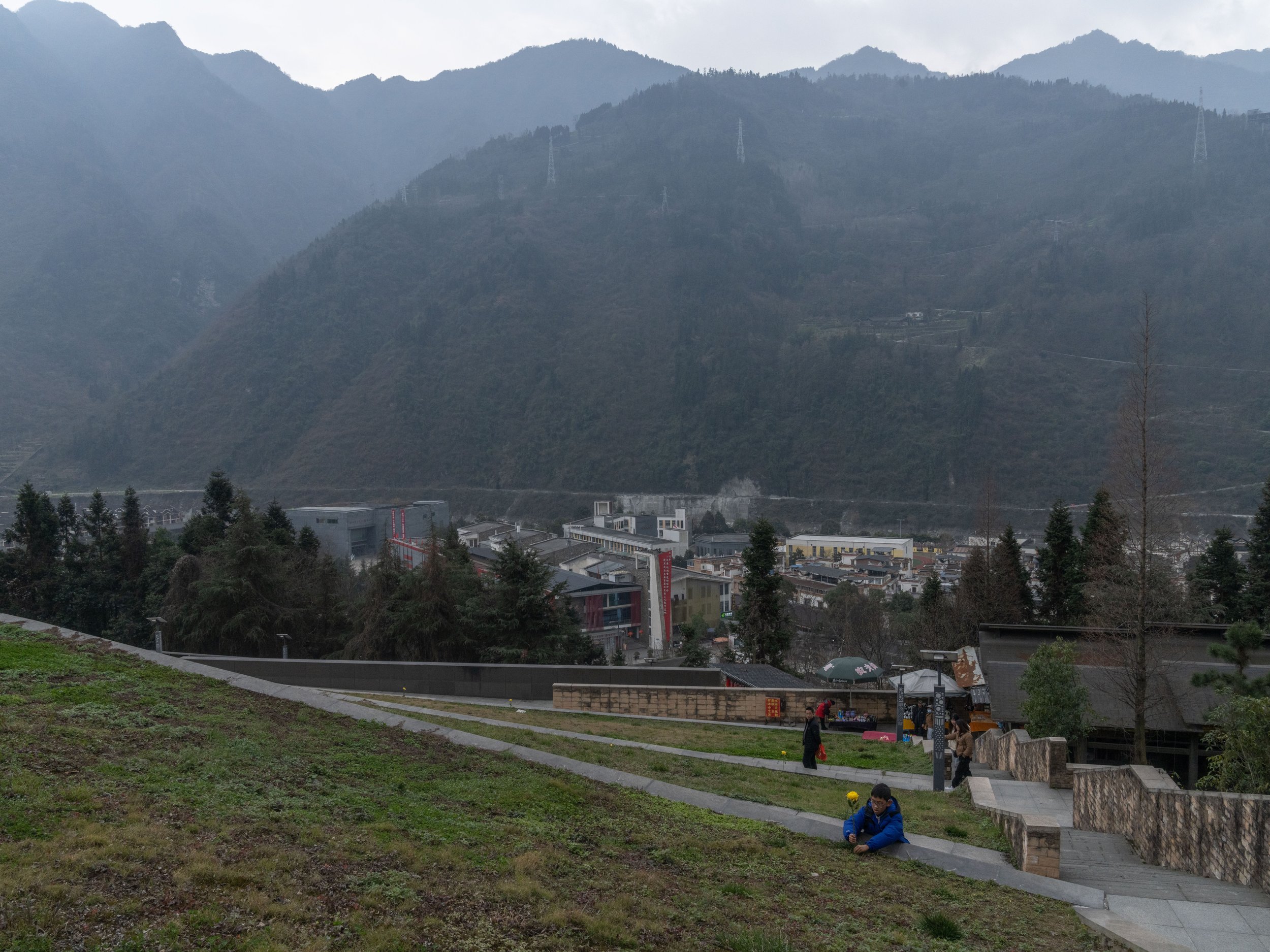
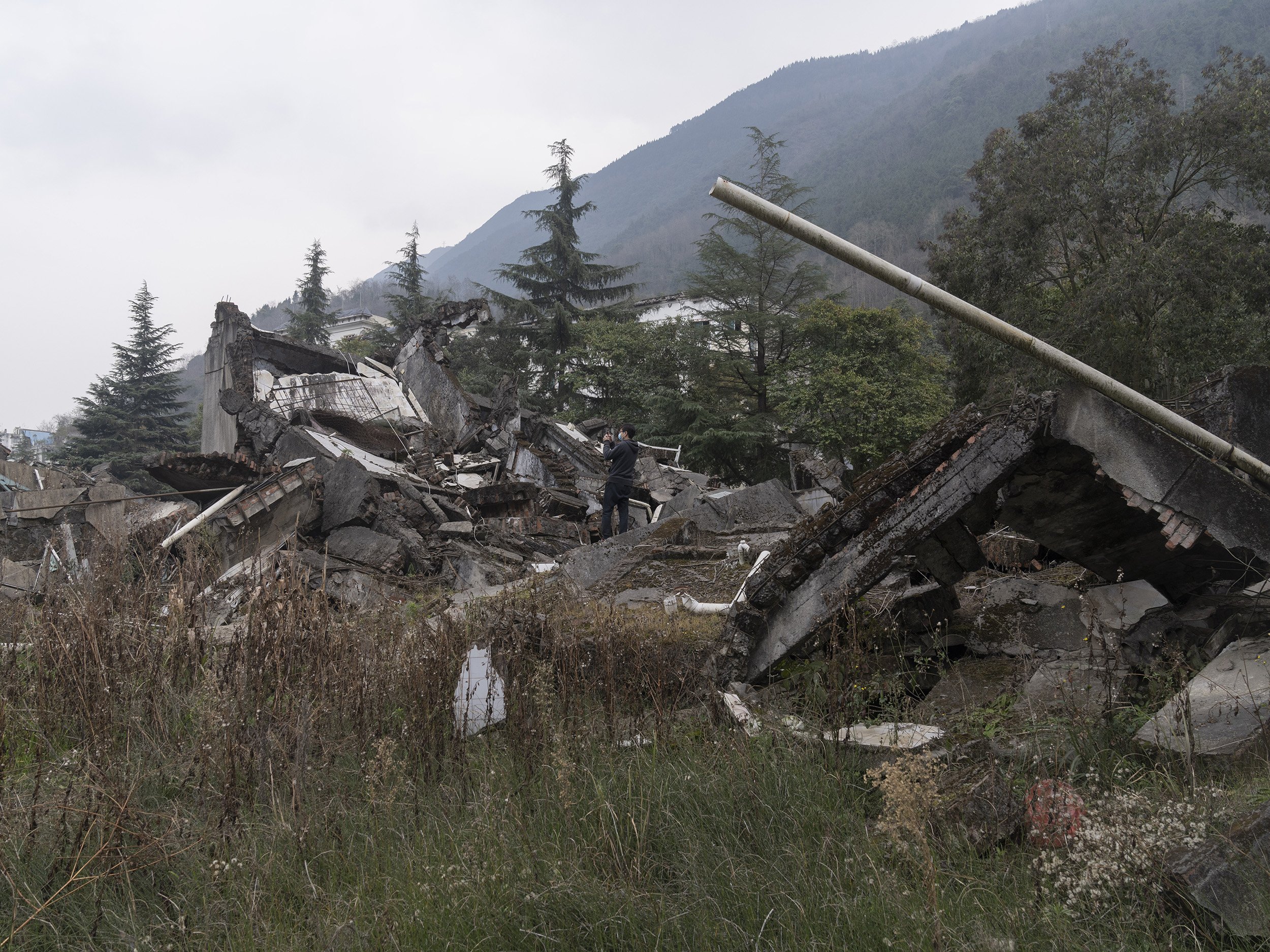
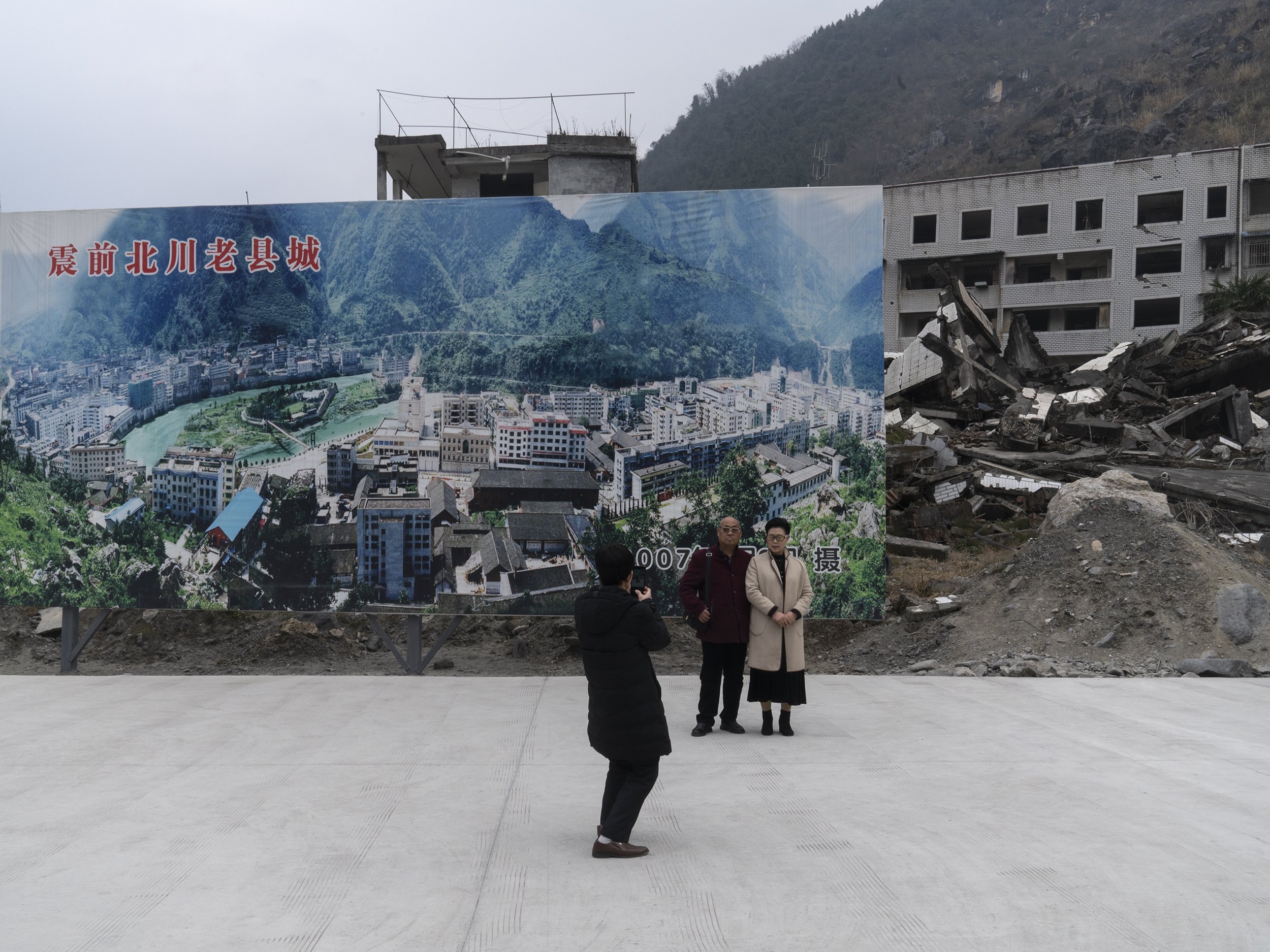
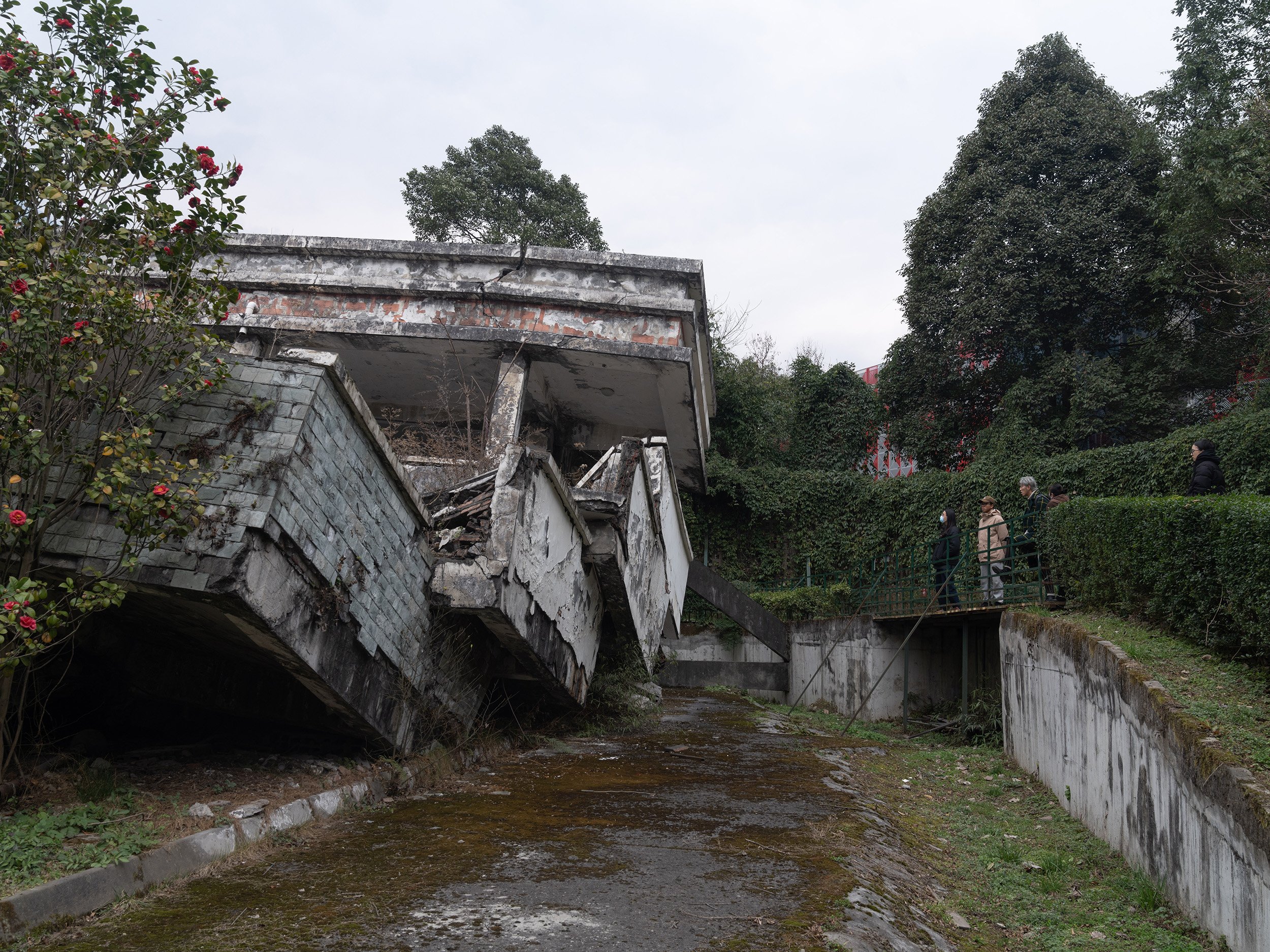
我用在汉旺本地导游邓师傅指导下拍的照片做了一本拍摄手册。
I made a photographic booklet with the photos I took under the guidance of Mr. Deng, a local guide in the earthquake ruins in Hanwang .
我回到几个地震现场,拍摄游客在这些空间的摄影行为(拍摄废墟、合影)。在汉旺,我于当地私人导游的指导下进行废墟景观的拍摄。这些摄影行为和结果映射出不同的主体(如经历过地震的人、大众媒体和自媒体人)通过图像传播地震记忆并构建关于地震的后记忆的方式。
I returned to several earthquake sites and photographed tourists in the act of photographing in these spaces. I also took photographs under the guidance of a local private guide. These photographic acts and results map out how different subjects, such as those who experienced the earthquake, mass media, and self-publishers, disseminated memories of the earthquake and constructed postmemories.
北川,2023
Beichuan, 2023
2022年9月,一场新的四川地震的背景下,对于居民能否跑出小区大门暂时避险的讨论于网络上形成热度。在当下,在可能的新的灾难发生之前,我们是否有必要复述过往共同的经历并放大关于苦难的及其记忆,以此帮助我们尽可能更有效地互相理解?
In September 2022, during the Covid-19 prevention and control in China, a new Sichuan earthquake triggers a dilemma about whether citizens can escape from the gates of their neighborhoods. I have placed the images of the back of the staff member who locked the gates to prevent people from escaping and made provocative remarks in this incident on top of the real earthquake ruins.


